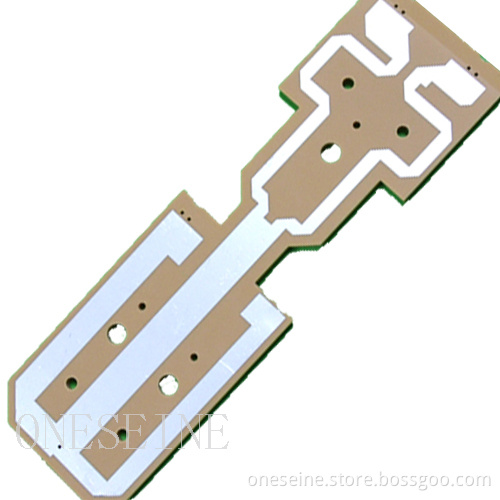
Rogers RO4003C High Frequency PCB 2 Layer Printed Circuit Boards
Your message must be between 20 to 2000 characters
Contact NowRogers RO4003C High Frequency PCB 2 Layer Printed Circuit Boards
Quick details:
Material: Rogers 4003C
Board size:9*3CM
Surface finish:Gold plated
Copper weight:1OZ
Number of layer:2
Solder mask:No
Rogers 4003C pcb material in stock:
Rogers4003C: thickness(0.254 0.508.0.813.1.524) DK 3.38
Rogers4350B: thickness(0.254 0.508.0.762.1.524) DK 3.5
Rogers5880: thickness(0.254 0.508.0.762) DK 2.2
Rogers3003: thickness(0.127, 0.508.0.762.1.524) DK 3
Rogers3010: thickness(0.635) DK 10.2
Rogers3206: thickness(0.635) DK 10.2
Rogers3035: thickness(0.508) DK 3.5
Rogers6010: thickness(0.635,1.27) DK 10.2
Rogers 4003C Laminate:
Volume production of microwave circuit assemblies requires fast, reliable and effi cient methods of attaching discrete microwave components to the circuit board. These could include simple two-lead devices such as resistors or diodes, or complex multi-lead MICs. Bonding techniques used for conventional epoxy glass grade laminates have been used with limited success on PTFE based laminates. However, conventional epoxy glass grade parameters are generally acceptable for the Rogers RO4000® series high frequency laminates. This application note is intended to present a general guide for device attachment to RT/duroid and RO4000 high frequency laminates.
RT/duroid Laminate Characteristics RT/duroid laminates are random glass fi ber reinforced PTFE or ceramic fi lled PTFE materials. PTFE is a soft, waxy, thermoplastic fl uoropolymer. The glass or ceramic reinforcement adds dimensional stability and increases the hardness but the laminates are, in general, much softer than the low frequency hardboards, such as glass/epoxy. PTFE is a thermoplastic rather than a thermosetting resin. At elevated temperatures the substrate will readily deform and take a permanent set. Lead attachment methods must therefore minimize the pressure applied to the dielectric, particularly at elevated temperatures.
RO4000 High Frequency Laminate Characteristics RO4350B™ and RO4003C™ high freqeuncy laminates are glass reinforced hydrocarbon/ceramic materials. The laminate is a rigid, highly fi lled thermoset resin system which has a Tg >280°C (536°F). The high Tg helps to maintain the expansion characteristics over a wide range of temperatures. Lead attachment methods are similar to what is practiced with conventional FR4 epoxy grade laminates.
High Frequency Rogers RO4003C Laminates
Typical Applications
High reliability aerospace and defense
A wide range of typical and non-traditional microwave/RF applications
Standard Dielectric Constant:
3.38+-0.05
Standard Thickness
RO4003C: 0.008" (0.203mm), 0.012 (0.305mm),
0.016"(0.406mm), 0.020" (0.508mm) 0.032" (0.813mm), 0.060" (1.524mm)
Standard Panel Size
12" X 18" (305 X457 mm)
24" X 18" (610 X 457 mm)
24" X 36" (610 X 915 mm)
48" X 36" (1.224 m X 915 mm)
Standard Copper Cladding
½ oz. (17μm) electrodeposited copper foil (.5ED/.5ED)
1 oz. (35μm) electrodeposited copper foil (1ED/1ED)
2 oz. (70μm) electrodeposited copper foil (2ED/2ED)
Related Keywords









